After having bought my first real full-size LED light, it was just a matter of time before I needed a second one to help me shape some light and try to make some stunning images.
To complement my 500-watt bicolor light, I needed something lighter and easier to carry around. The Nanlite Forza 60 B II felt like the perfect choice as a second light.
We’ll see in this review if this small light is indeed something you should consider.
Introduction
Before reading this review, I would highly suggest you read my in-depth review of the Nanlite Forza 500 B II.
I will try to avoid repeating myself every time I review a light, so if you want to learn everything about the basics of LED lights and cinematic lights in general, you should take a look at the article.
As I previously mentioned in the introduction, this is the second LED light I am getting. Having one light is quite limited for illuminating a scene.
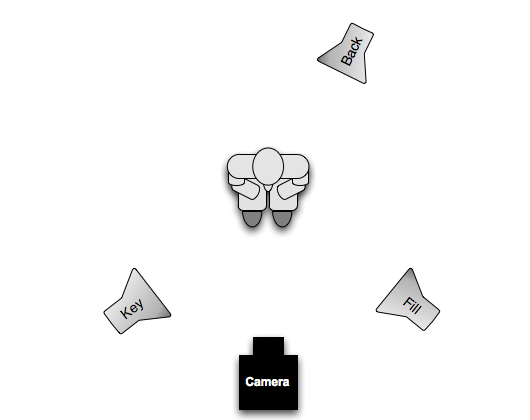
Just for an interview setup; you generally need 3 to 4 lights:
- The key light
- The fill light
- The hair light
- The background light is optional.
A scene doesn’t necessarily have to be that formal when it comes to lighting. On the other hand, if you want to add dimension and architecturality to a commercial video, you must create what we call a checkerboard or, at the very least, pockets of lights.
Why choose Nanlite?
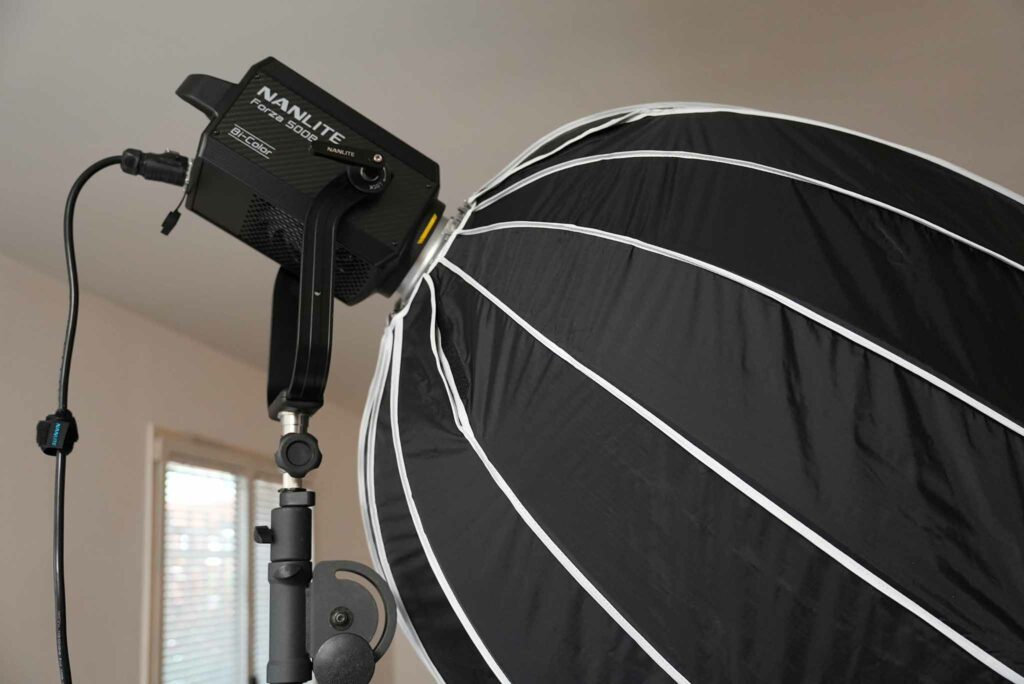
Nanlite is the brand I went to because of a film maker named Jacques Crafford. I found the visuals of his work to be quite striking, and I tend to know that when it comes to gear, it’s better to judge based on the results than the numbers.
The only other option I was considering was Aputure, which is, for me, the best value for money for small productions like ours.
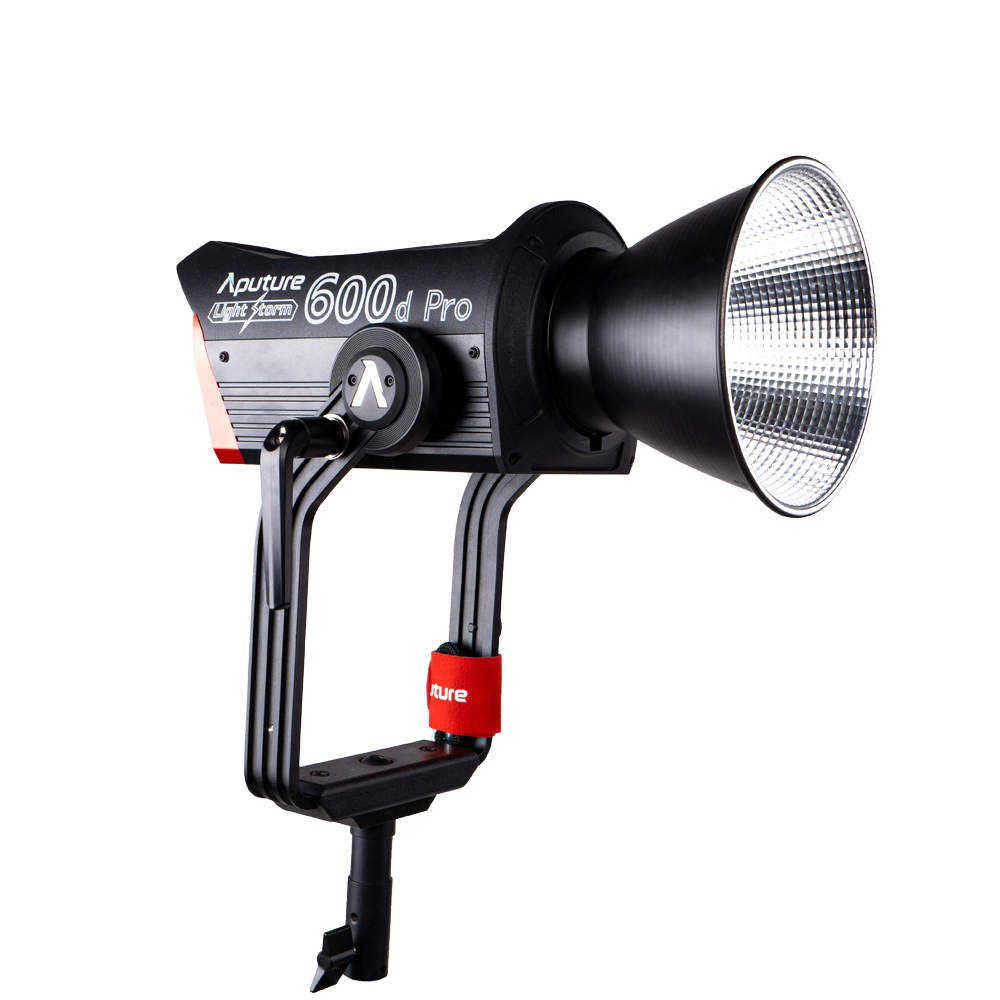
Aputure is actually the gold standard in this market, and their products are overall more refined than Nanlite.
The reasons why I chose Nanlite were that the bi-color options are more affordable and deliver a very similar level of quality. I got my Nanlite Forza 500B II in promotion for 1200 euros HT. The Aputure 600x Pro cost 1,879 euros HT. That’s quite a difference that is very hard to justify.
I would rather have more lights than one light that is substantially better, which is not necessarily the case.
The Aputure LS 60X is 399 euros HT, whereas the Nanlite 60B II is 299 euros HT. The Nanlite is lighter, has an optional fresnel and projection attachment, has built in DMX, and has a streamlined design that fits with the larger models.
Why choose the Nanlite Forza 60B II?
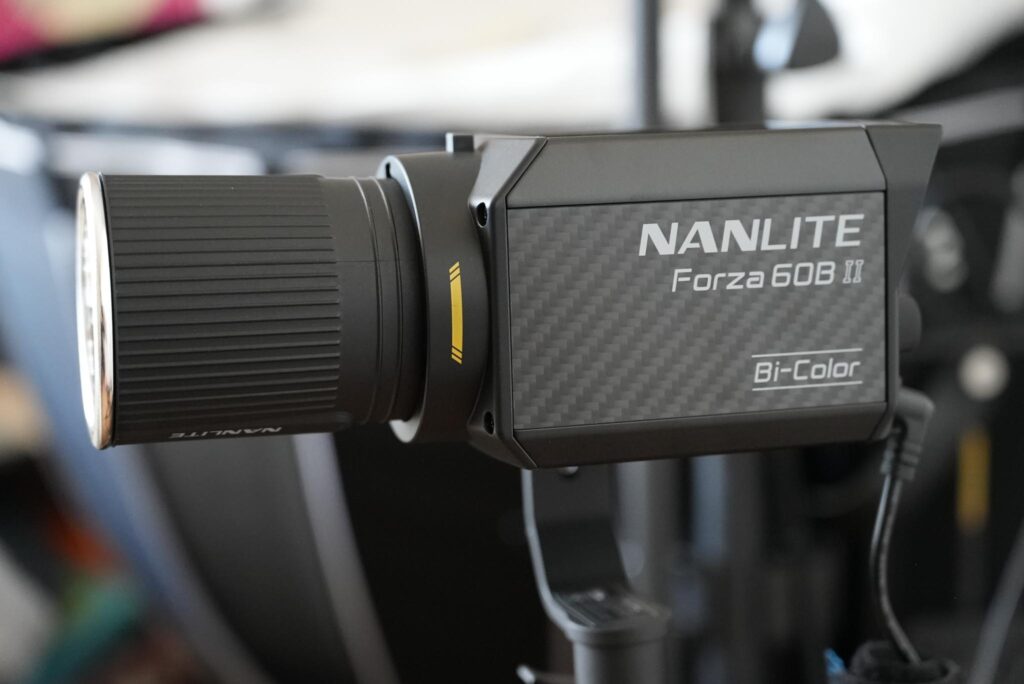
The Nanlite Forza 60B II is a bi-color, 60-watt LED light. This is basically the smallest model in the Forza lineup, which means it is also the lightest and easiest to manipulate and carry around.
Even though it is the smallest, it packs quite a punch, with up to 14090 lux at 1 meter and 1381 lux at 3 meters.
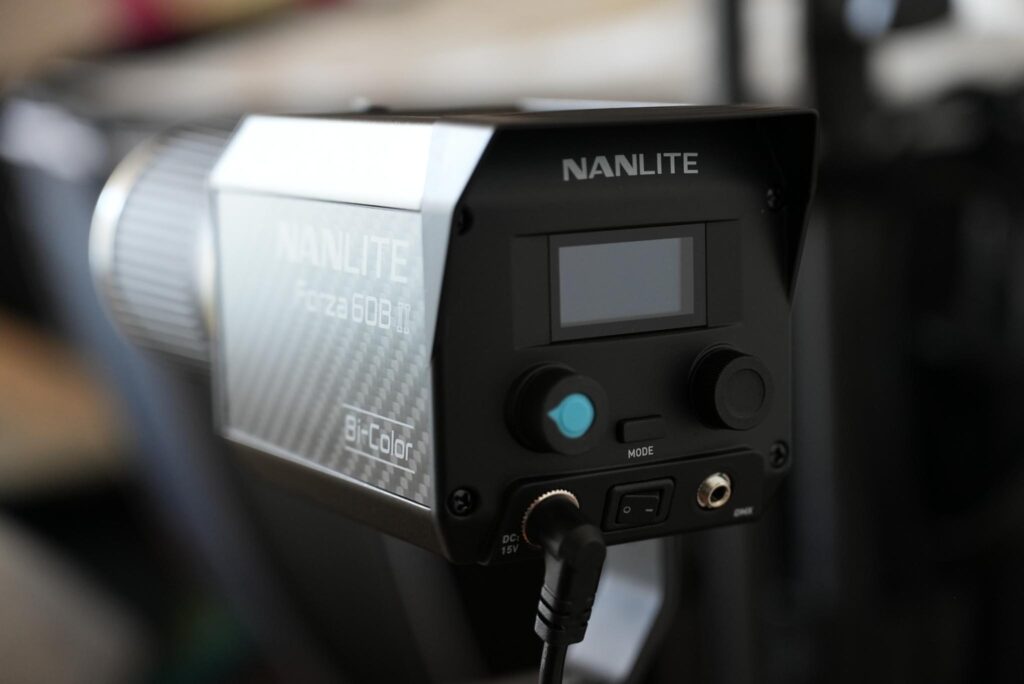
What sealed the deal for me was that this light has enough power to be shot through a 90-cm softbox and act as a key light. This means that it has more than enough as a fill or with the reflective bowl to be used as a hair light or even as a projection.
For this size and weight, it’s hard to be more polyvalent. The only thing you won’t be able to do with this light is mimic the sunlight from outside a house or compete with the sunlight on a very bright day.
My review of the Nanlite Forza 60B II
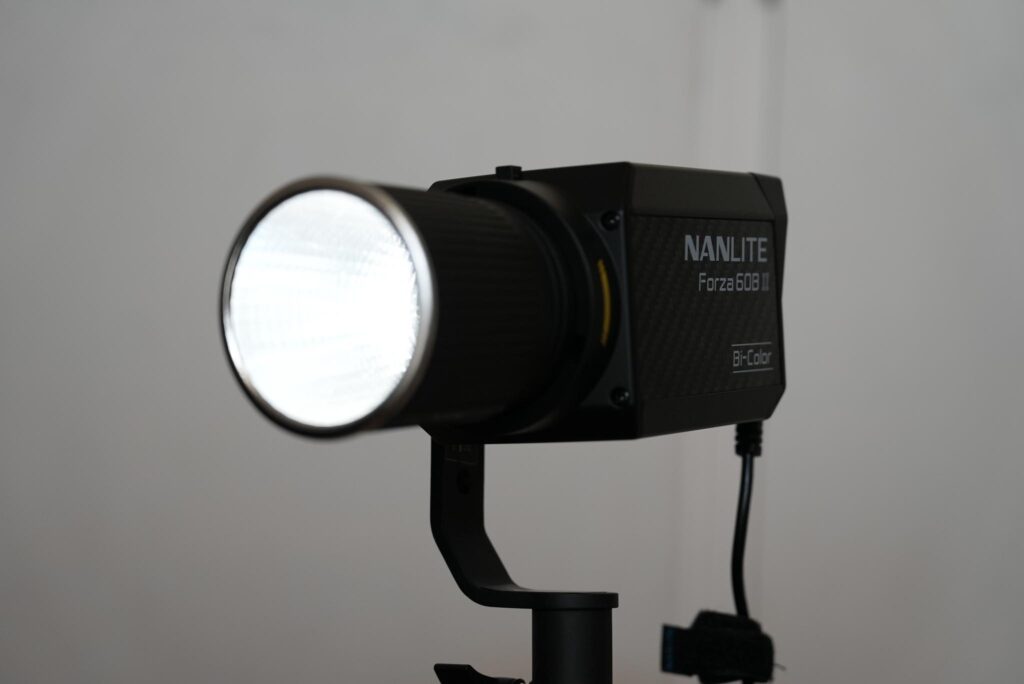
My first light was a Nanlite 500B II, so when this 60-watt light arrived, I was astonished by its size. It’s literally smaller than the palm of my hand and not too far from a DSLR flash in terms of length.
The weight is also very light. I was originally planning to bring the 500B II on set in backpack mode, but honestly, now I can tell you that this model is so much more adapted to be carried handheld along side the 60 cm softbox.
What comes inside the box?
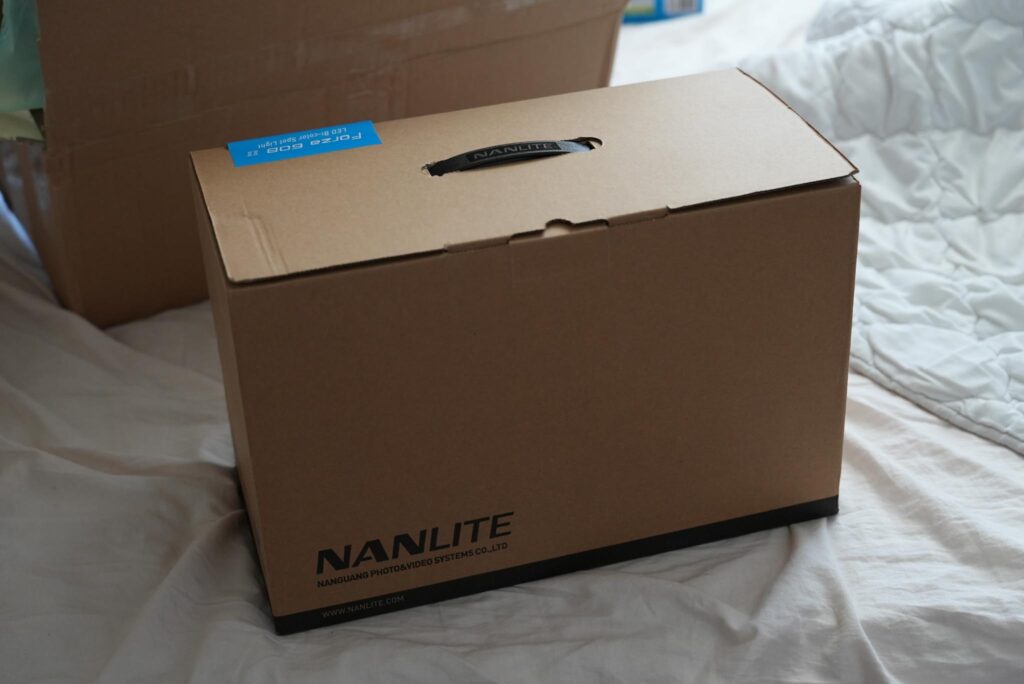
You basically have the typical light bag that you would get from an LED light, but in a much smaller version. Being a lower wattage, the alimentation is much smaller and lighter. It’s comparable to the one you would get for a laptop.
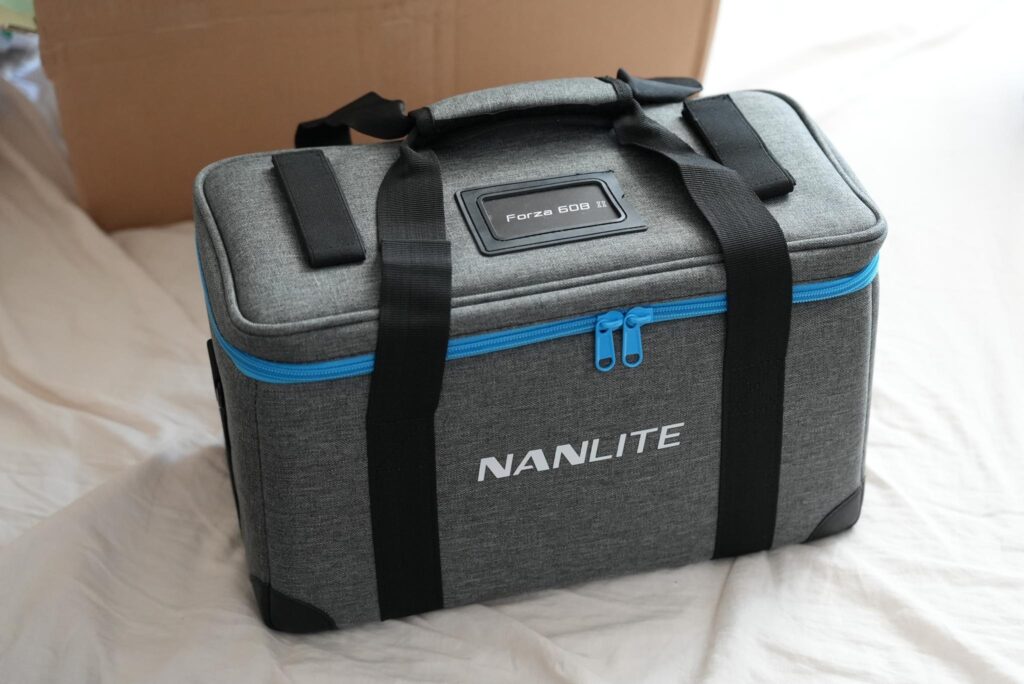
The bag comes with a light and a bunch of accessories, such as the included reflector, which is smaller in this version compared to the 60B.
It also has a handle grip to hold the light handheld and to power it with two Sony NP-F batteries. They also include a Bowens adaptator for you to use your Bowens Nanlite modifiers.
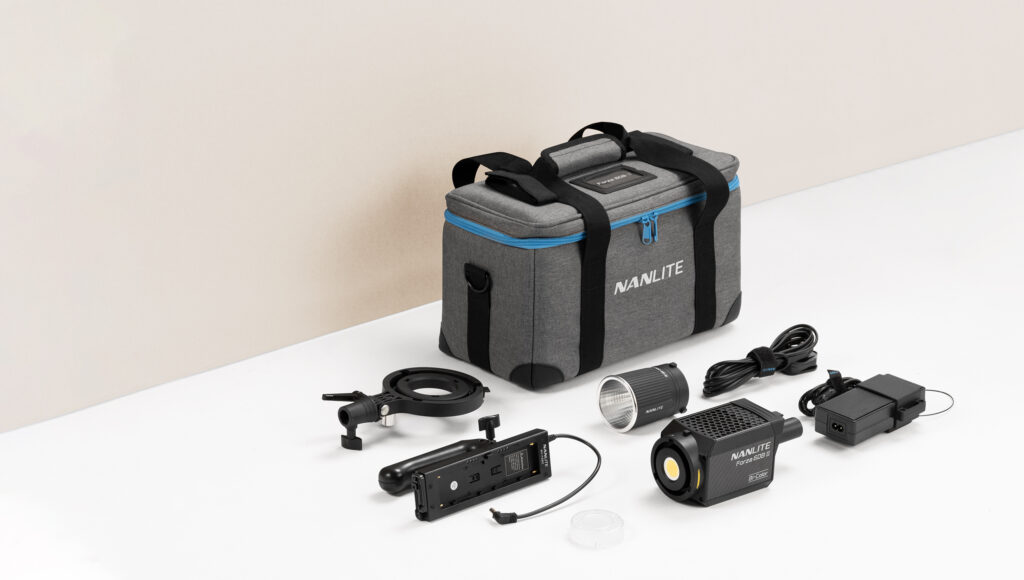
The light comes with a FM mount since the light is smaller than the diameter of a Bowens mount.
How is the build quality?
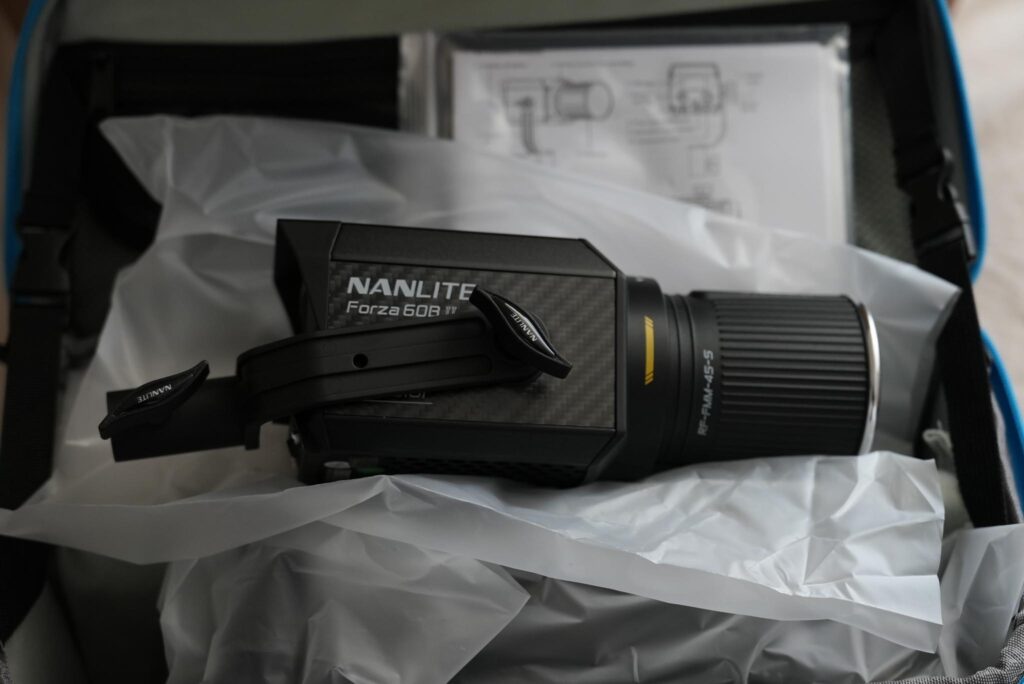
If the Forza 500B II was built like a tank, this tiny Forza 60B II is decently built. It has metal parts, but most of it is plastic.
That makes sense since, at the end of the day, this is a portable light that has to be nimble and easily manipulated.
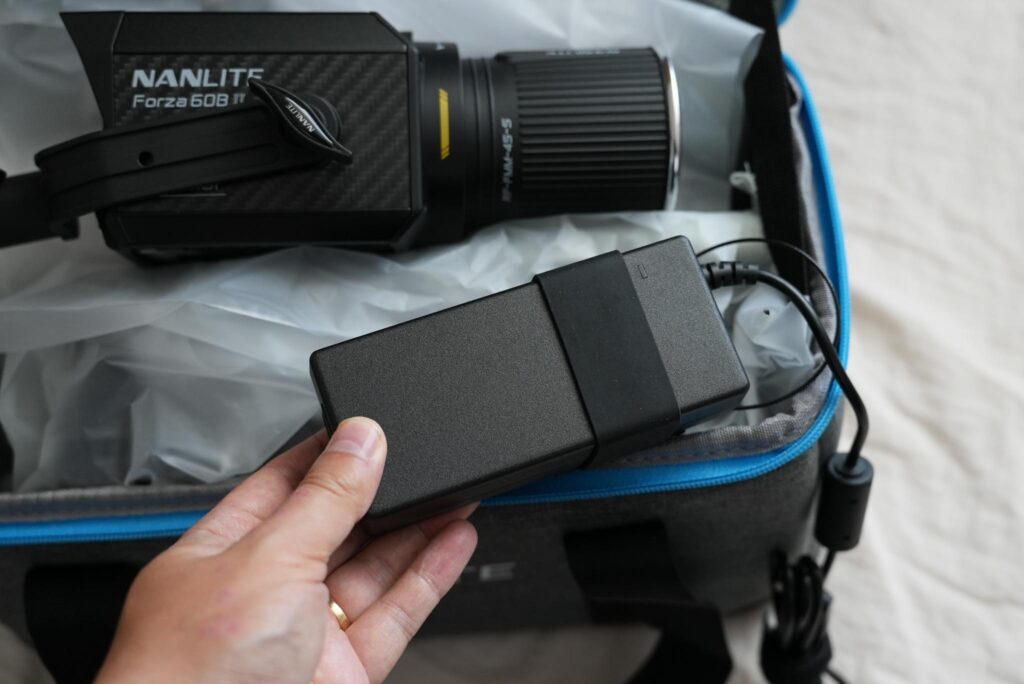
The plastic came with some wear; I think the unit was brand new, but with Nanlite, the products are manufactured in China, and the level of detail is not on par with Aputure, hence the cheaper price.
Other than that, I think this product looks quite nice and fits well with other Forza models. The knobs are quite plasticky, but the ones from the 500B II are probably made of the same materials.
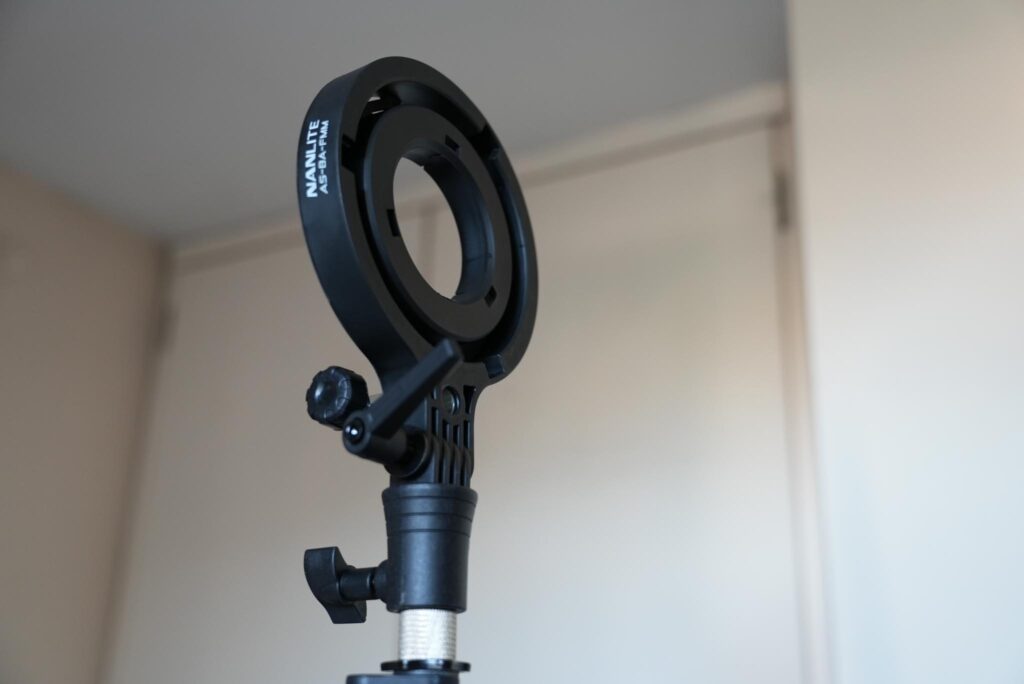
The Bowens adaptor is made out of plastic too, from the mount to the foot. I honestly don’t know if a 150-cm softbox would hold on to it. My Nanlite Forza Softbox SB-PR-90-Q and Nanlite FL-20G Fresnel Lens hold pretty well on it.
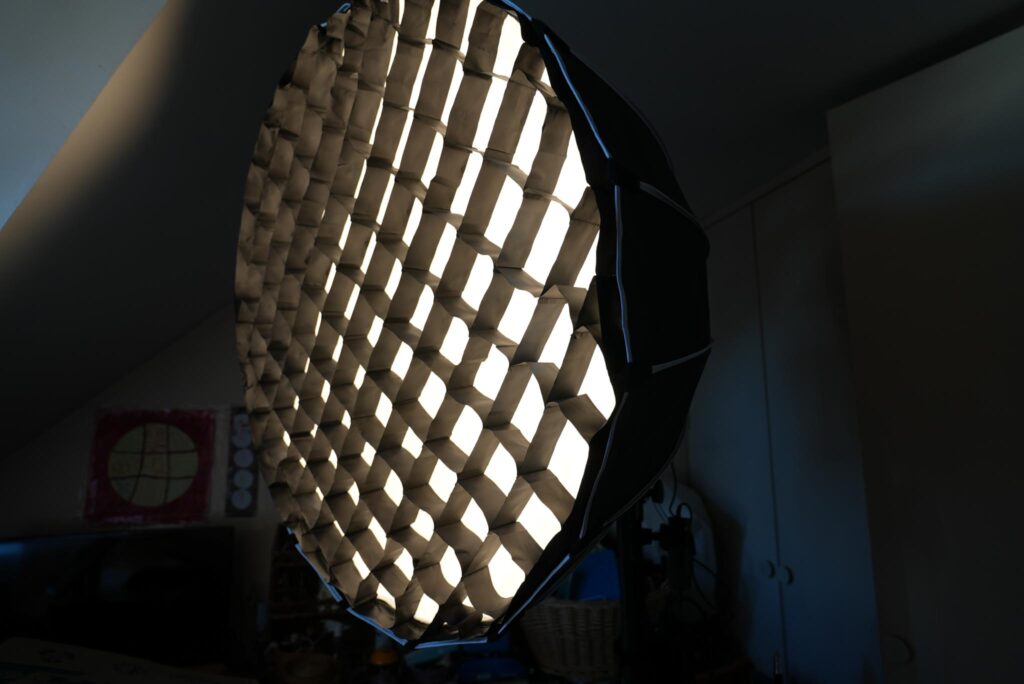
Maybe it’s just a feeling, and the unit will actually hold on better than the bigger units. Sometimes PVC or plastic does hold better to abuse.
How does it perform?
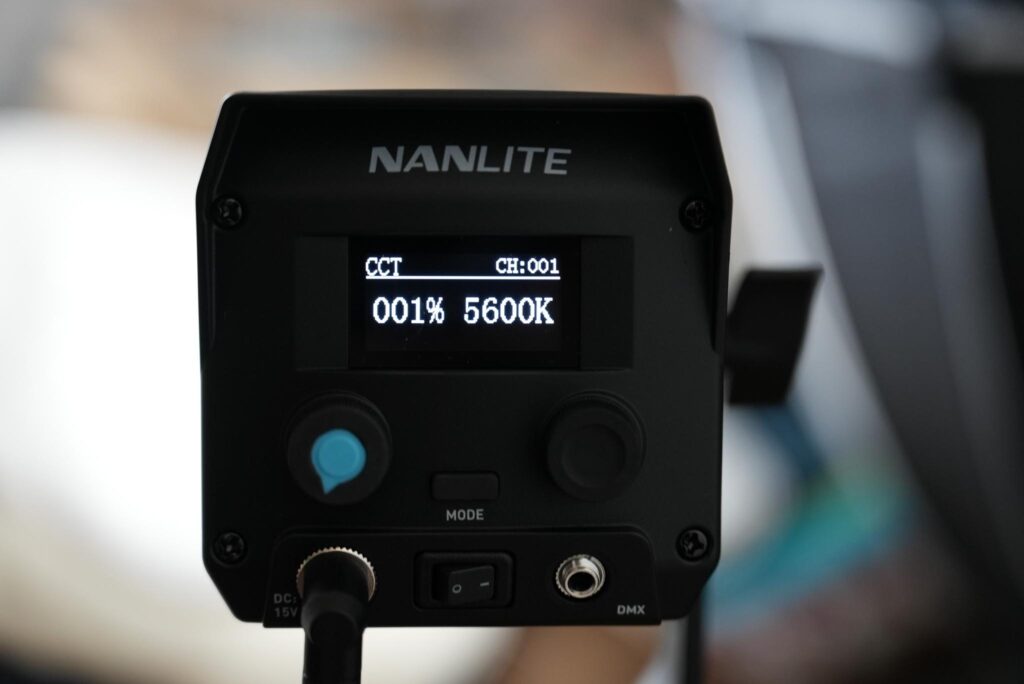
The Nanlite Forza 60B II is the light I should have bought in the first place. This unit is truly made to be handheld on the field. I think the Forza 150B also shares this portable aspect.
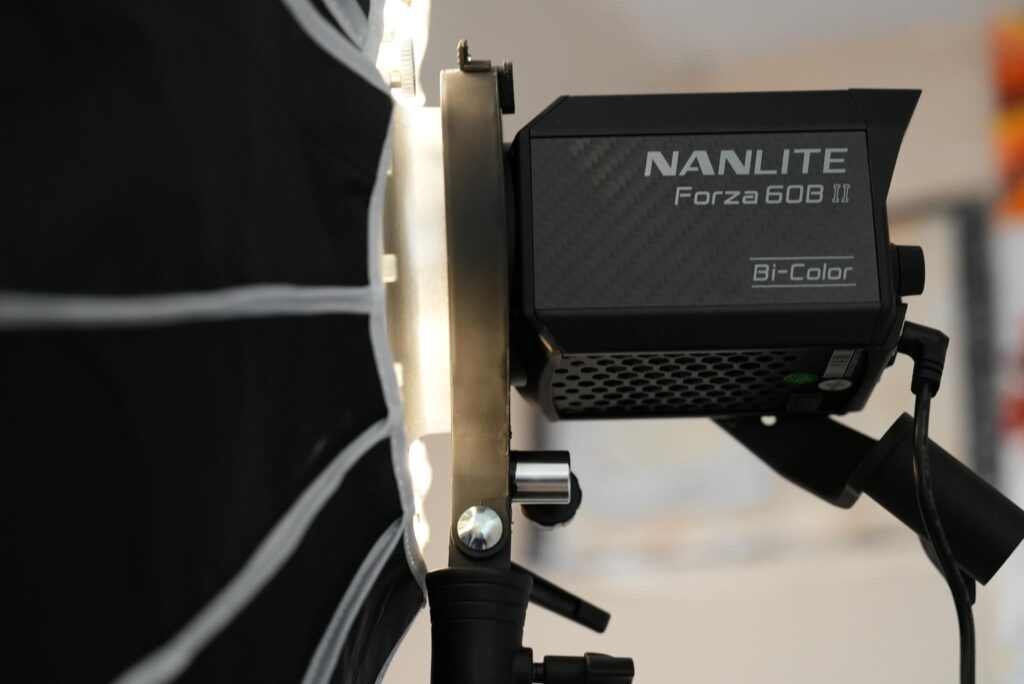
It’s honestly rare to use a light, even a small one, at 100%, especially indoors. Only if you bounce it or use diffusion can you crank it up to 100%.
This Forza 60B II is quite more powerful than I was expecting, especially with the reflector attached to it. I think it is more than adequate for interior scenes.
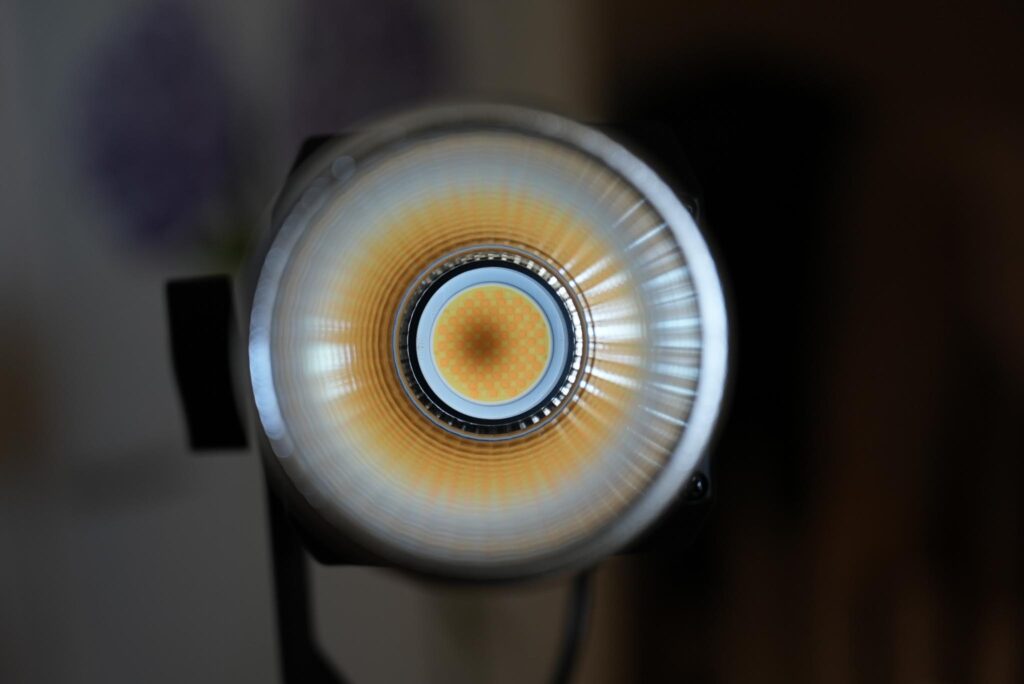
The unit features a cooling fan that produces a slight noise. It’s actually louder than my 500B II at full power, but the sound is still quiet enough to go unnoticed. Occasionally, I forget to turn it off after allowing it to cool.
I think since the unit is way smaller, the radiator inside has to be ventilated as much as possible. I think a microphone would definitely pickup the noise at 100%.
Is the light color accurate?
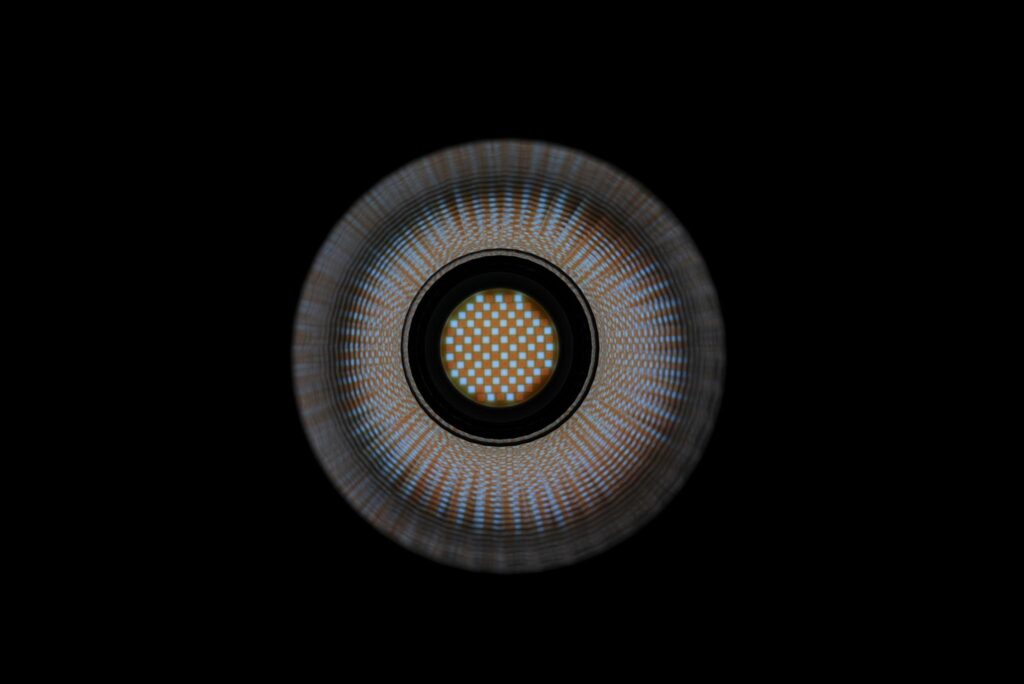
Again, I will not repeat myself for each light I review. You can refer to my review of the Nanlite Forza 500 B II to understand how lights are evaluated.
Now that you understand how it works, you can see the results of the measurement.
- CRI : 96
- TLCI : 98
- SSI : 83@3200K 74@5600K
I think outside of a slightly lower output to make the fan quieter, the score should be fairly similar to the first generation in terms of color accuracy since no innovation has been done there.
Performances of DMX
I’ve never worked with DMX, so I don’t fully grasp the specific requirements for someone who needs that level of control over their lighting. As a beginner, I prefer a straightforward setup, and the Bluetooth app meets my needs perfectly. Having wireless control, combined with good composition and lighting, already feels like a significant accomplishment for me.
Real life applications
As you can see in this video, the Forza 60B II or Mark I, as a matter of fact, is more than enough to act as a keylight, even through a 90-cm softbox.
If this type of small light is more often used as a hair light, it’s a great thing that this small unit packs enough power to light a face through a softbox during the day.
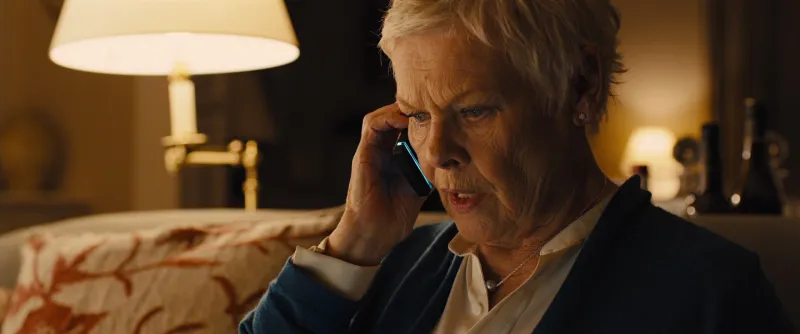
I’m confident this light could be bounced off unbleached muslin to replicate the iconic cove lighting technique famously pioneered by Sir Roger Deakins.
This technique can be used at night as well as in daylight, as long as there is a light to motivate this light to wrap around the face.
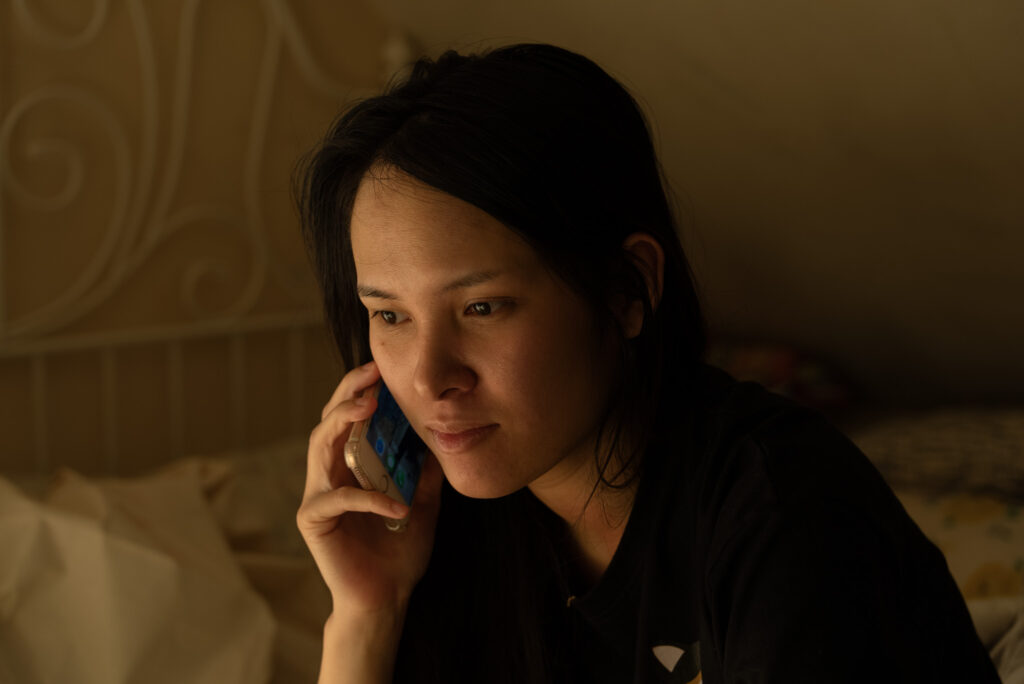
To achieve an effect like this, you usually need three lights and some practicals to achieve this lightning technique since the muslin has to really wrap around the face.
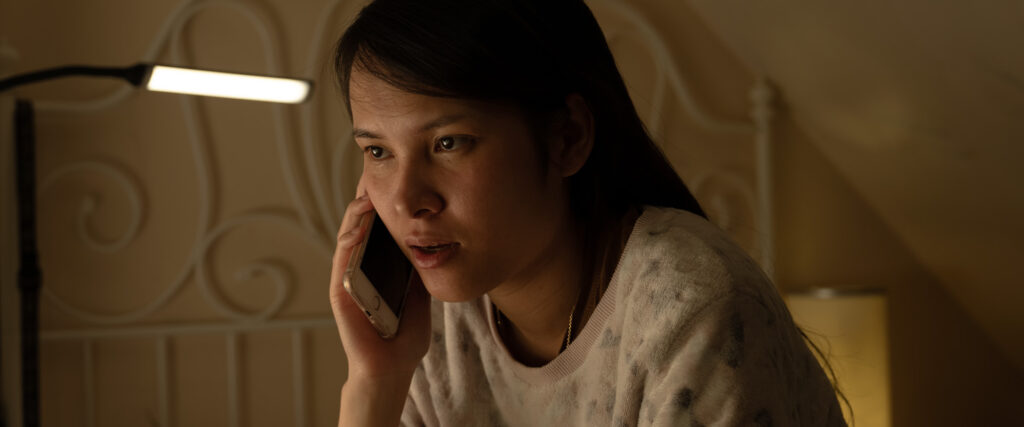
You’ll also need to flag the shadow side of the face to create a bit of contrast. Ideally, you would get what we call Rembrandt lighting, with a triangle of light on the cheek of the side in the shadow, generally the one closest to the camera.
This effect makes the light wrap around faces in the most flattering possible way without looking out of place.
Color accuracy
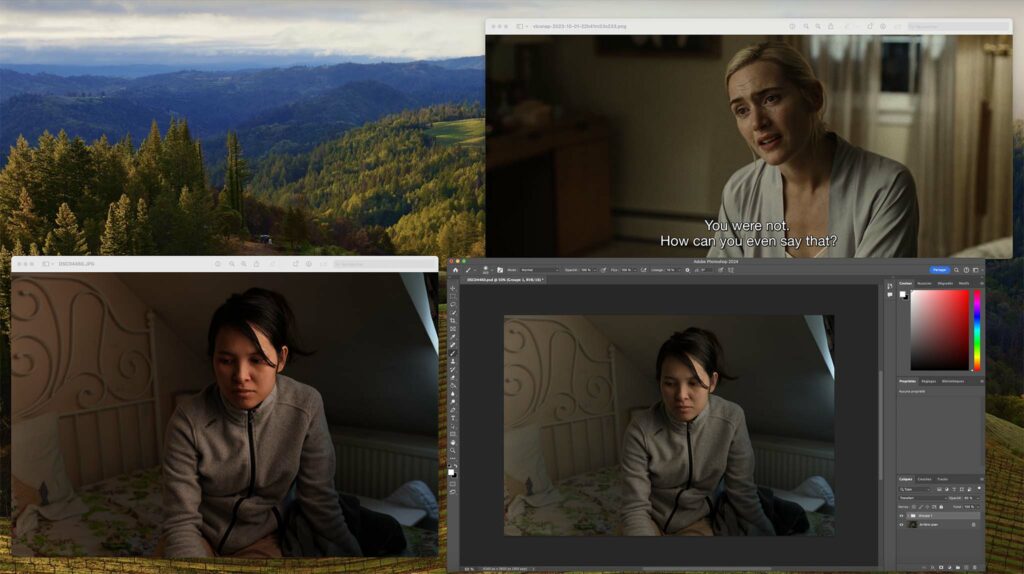
The color accuracy of the light seems to be slightly different than that of the Forza 500B II. Just by looking at it with the naked eye, you can see that both lights produce a different color even when both are set at 3200K.
The smaller Nanlite 60B II seems to have more magenta than the Forza 500B II, which is more yellow overall when set to a tungsten white balance.
The Forza 500B II offers an advantage in its ability to handle green and magenta shifts, a feature that is absent with the 60B II. However, as long as both lights can be adjusted to match each other—which they can—it will be relatively simple to correct any differences during post-production.
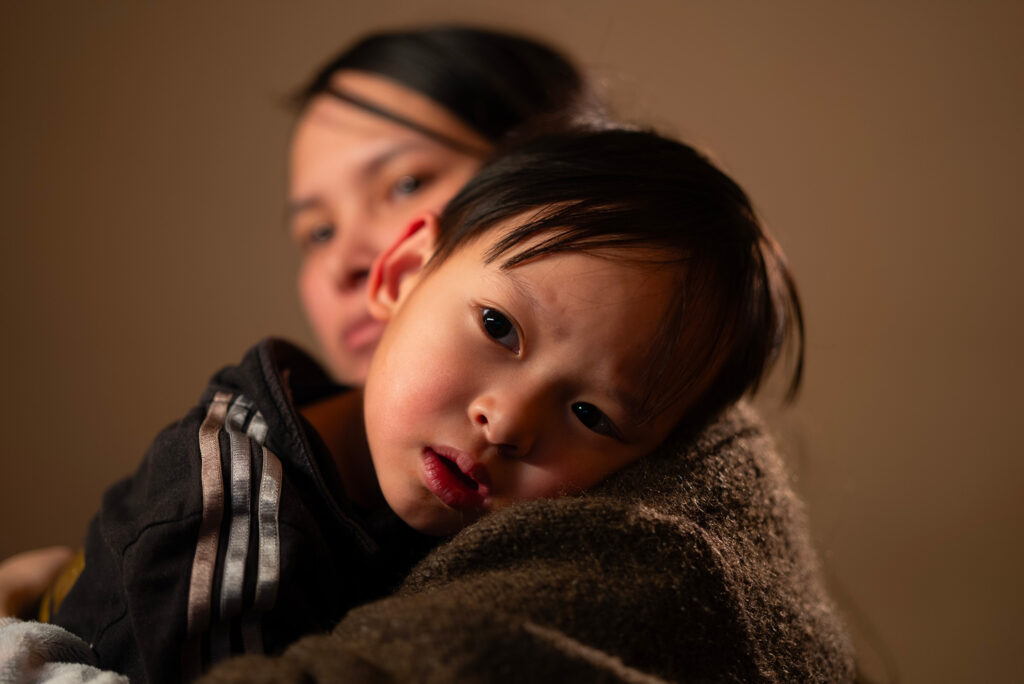
When taking a picture with a Sony A7S III, you can clearly see this magenta cast not only on the screens but also in the jpegs and raw files.
It’s very hard to get this golden yellow look that you would get with tungsten and celluloid film. I still don’t know if this is due to the light or the camera. My guess is that perphaps is a bit of both.
The file needs some post-production:
- Set the kelvin of your camera at around 3700K to keep the warmth.
- Set the picture color profile to Adobe Standard.
- Add more green to the tint (-8).
- Lower the red curve.
- Lower the blue curve.
In the video, the colors seem to be more in line with the Adobe standard profile, which is probably a Rec 709 color gamut.
The official numbers
- TLC 98 @3200K
- TM30 @3200K Rf: 94 Rg: 101
- SSI 83 @3200K
As you can see, LED lights, even with an SSI above 83 at 3200K, still need some color correction to look as good as a 3200K Tungsten bulb shot on film.
If LEDs, especially those of this size and range, are so much more practical than tungsten lights or HMIs, they still can’t produce the same quality of light.
Only an LED with an SSI of 90 for tungsten, such as the Amaran 200x S, might be capable of delivering comparable results.
The battery grip
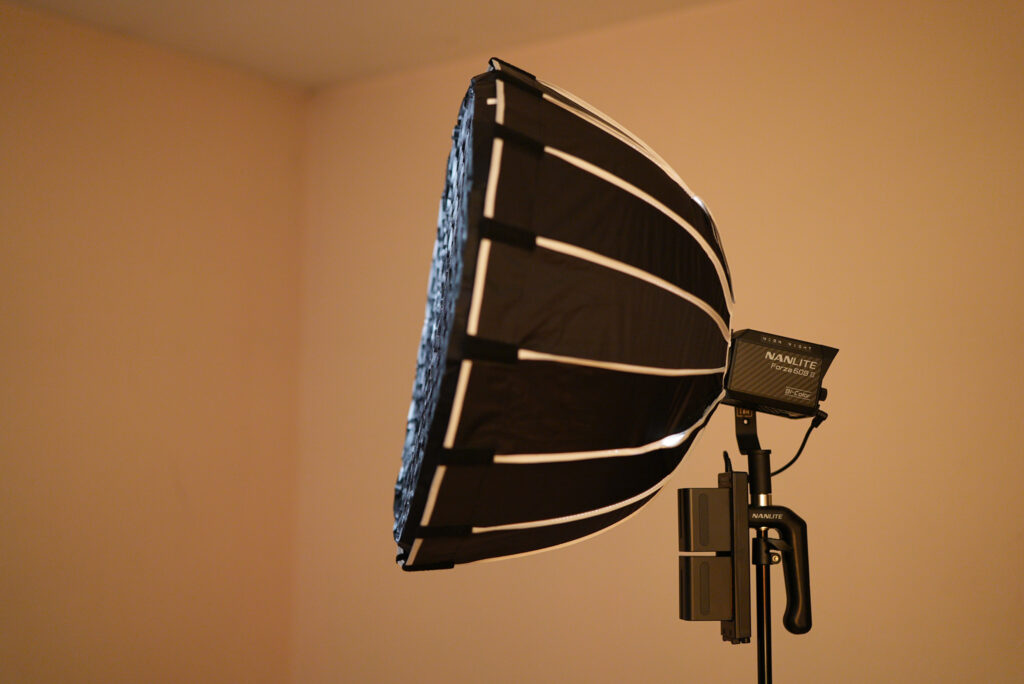
The battery grip is included in the package and accommodates two NP-F batteries. I use two Smallrig NP-F970 7800 mAh batteries, which should provide me with just under two hours of runtime.
The battery grip features a handy button with indicator lights to show the remaining battery charge at a glance. The design allows for quick transitions between handheld use and mounting the light on a stand, which is highly convenient.
However, one drawback is the limited ability to angle the softbox downward toward the subject. This limitation is primarily due to the placement of the batteries, which can obstruct movement and restrict the downward tilt. You can surely use a boom stand but it defeats the purpose of being light weight.
While the concept of using a small light with a softbox is fantastic, the included handle is, in my opinion, not the most ergonomic. It tends to tip forward, especially when paired with the softbox. Using the Bowens adapter might help balance the weight of the light and the softbox, but it would also add extra weight to the overall setup.
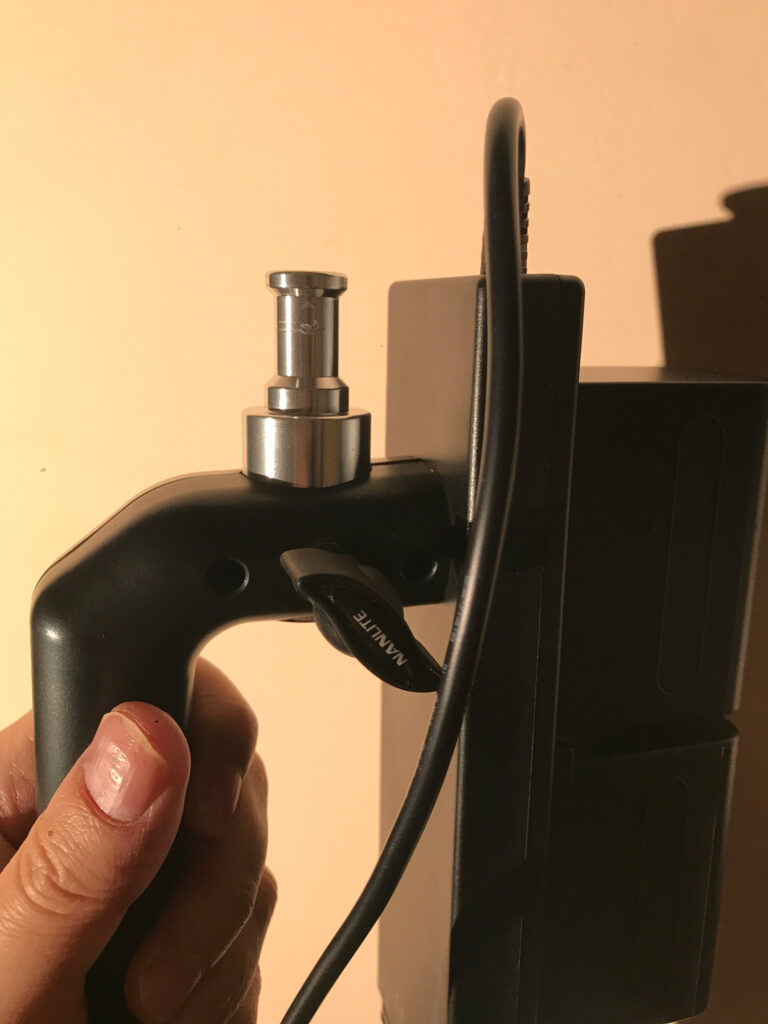
The metal part of the handle appears to scratch easily when tightening the light, which is disappointing, especially considering that even inexpensive light stands seem more resistant to scratching.
I haven’t tested competing products like the Zhiyun Molus or the Smallrig 4894, but their softboxes appear to be very small, making them seem more like a novelty than a practical lighting solution for most setups.
The cons
A key drawback of this compact 60-watt light is the Bowen’s mount adapter, which is entirely made of plastic and can be a little bit difficult to securely lock into place.
On the plus side, the adapter is included in the package, which is a nice touch. However, it would be more beneficial if the attachment mechanism was sturdier and more reliable.
Due to the small size of the light, tilting the softbox downward proves to be difficult without it coming into contact with the light stand or the battery grip. This limitation makes it challenging to position the light at certain angles, especially when aiming for a lower tilt.
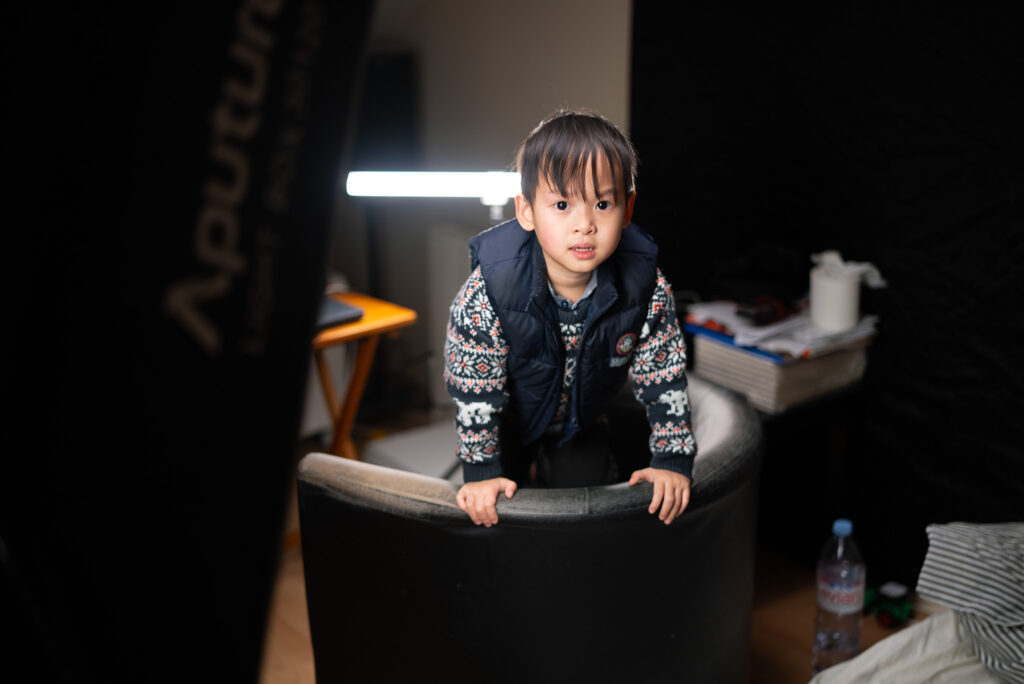
It would have been great if this light included a green-magenta shift ajustement, which I believe is essential for all bi-color lights. This feature is important because such lights can only track the delta curve in a linear manner.
A glass protection for the bulb or LED diode grid would have been a valuable addition, offering extra durability and safeguarding against accidental impacts. This feature would enhance the overall longevity of the light while maintaining the safety of the internal components.
The control panel on the back of the light and the Nanlink app don’t display the battery level, which can be a bit inconvenient. This omission is particularly noticeable since even the Pavotube II 15X includes this functionality.
The battery level can be checked directly on the grip, but it’s not the most intuitive or precise method for gauging the remaining charge.
Verdict
8.8 out of 10.
The Nanlite Forza 60B II is easily my favorite light. Even though my 500B II offers more power and superior build quality, its larger size makes it less enjoyable to work with.
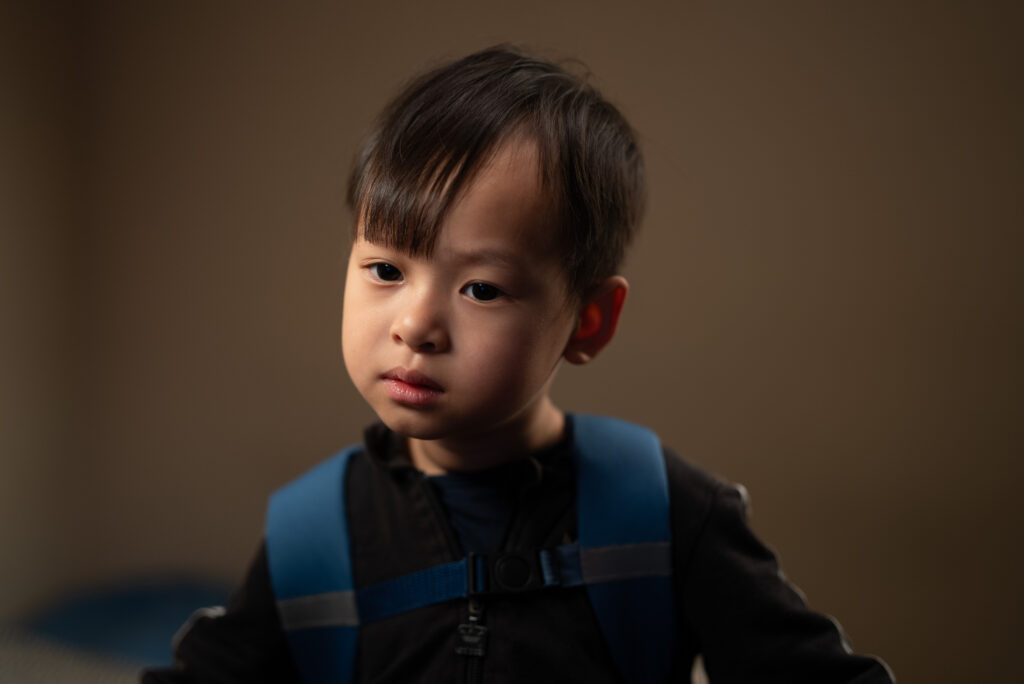
What I love most about this light is its agility. It’s incredibly easy to pull out of the bag, set up on a budget light stand, and start experimenting with lighting setups right away.
This light offers impressive power for its size, though it’s difficult to notice a significant increase in intensity once you go beyond 80%. While it’s made from plastic compared to the Aputure LS 60X, the convenience it offers far outweighs its build quality, especially considering that lights aren’t built to last forever.
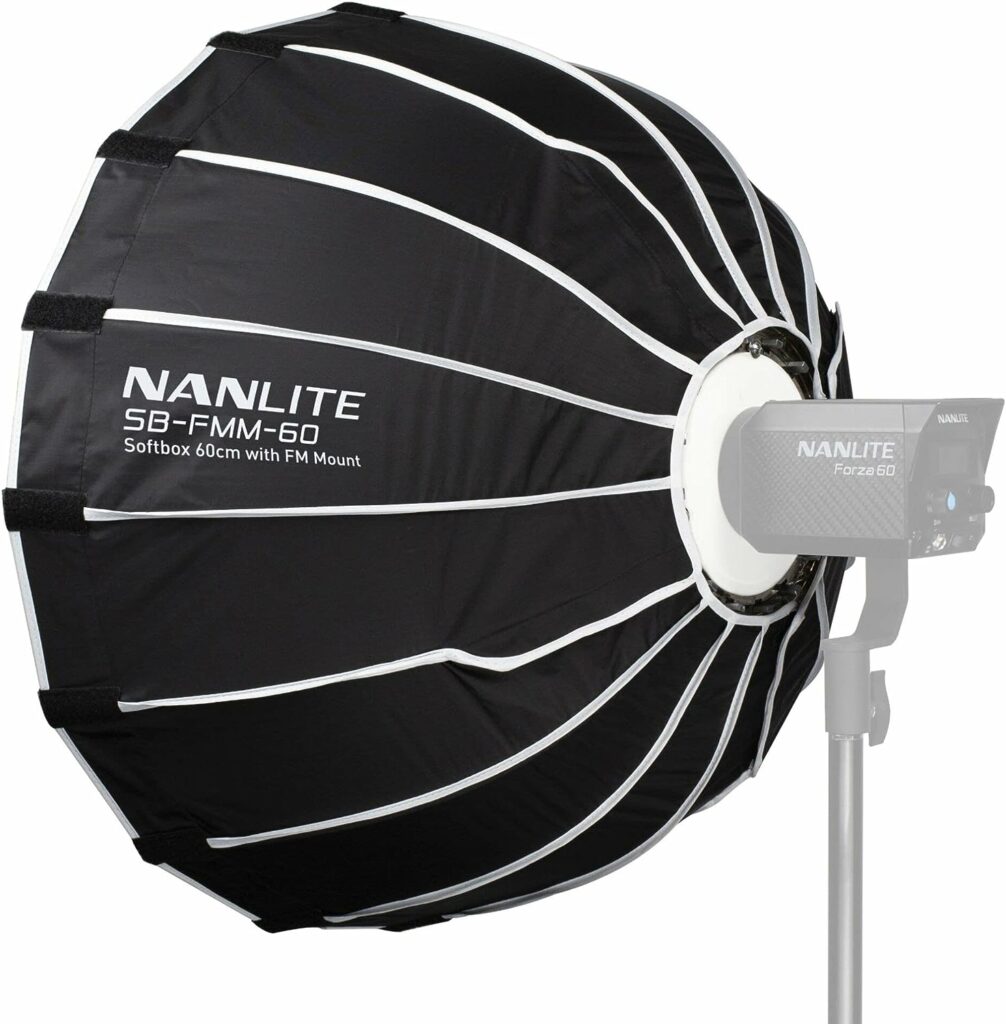
I highly recommend this light, along with a 60cm softbox. I would even consider purchasing another FM-mount light like the 150B instead of the 300B II, as the latter is far less convenient to use for the power delivered.
Informations
Nanlite Forza 60B II
Website: https://nanlite.com/
Page of the product: https://nanlite.com/product-forza-60-60b-ii?t=1695242840624#/en/Forza-60/60B-II
Facebook page: https://www.facebook.com/nanlitelighting/
YouTube page: https://www.youtube.com/c/NanliteGlobal
Our video production in Paris: https://www.neonnight.fr
Samples using the Forza 60B II :
Packshots
https://www.neonnight.fr/en/portfolio/viwone-packshots-dark
https://www.neonnight.fr/en/portfolio/viwone-packshots-bright
https://www.neonnight.fr/en/portfolio/personal-espresso
Studio Portraits
https://www.neonnight.fr/en/portfolio/viwone-create-together-drip







GIPHY App Key not set. Please check settings
4 Comments